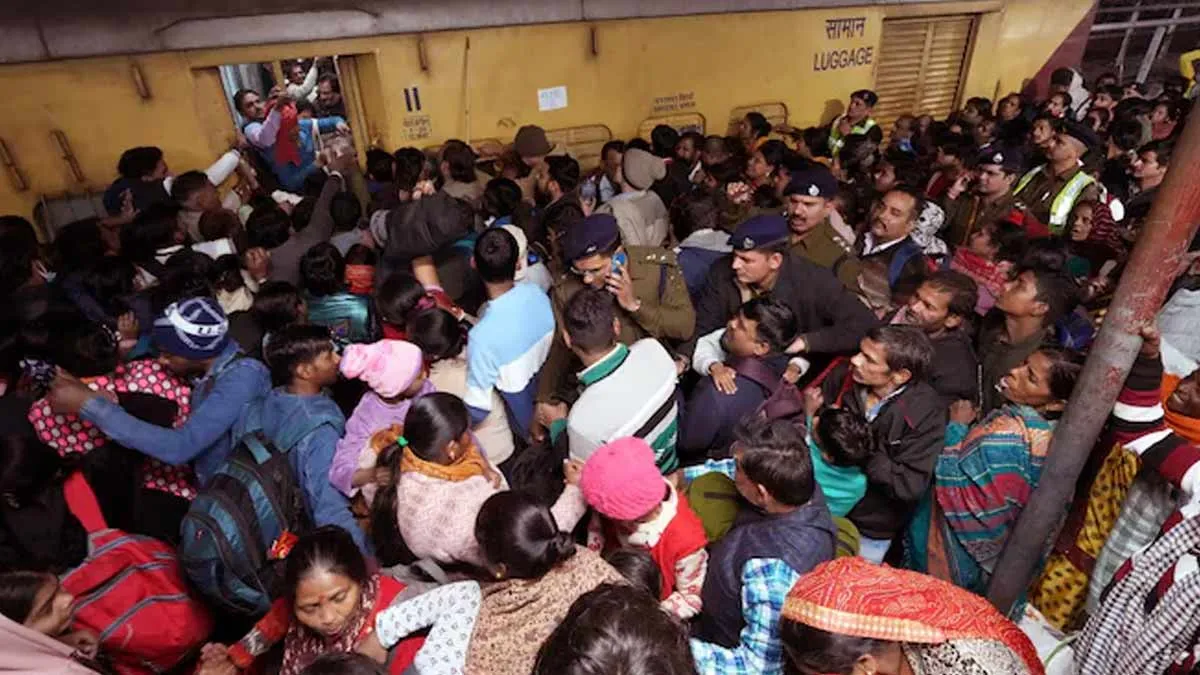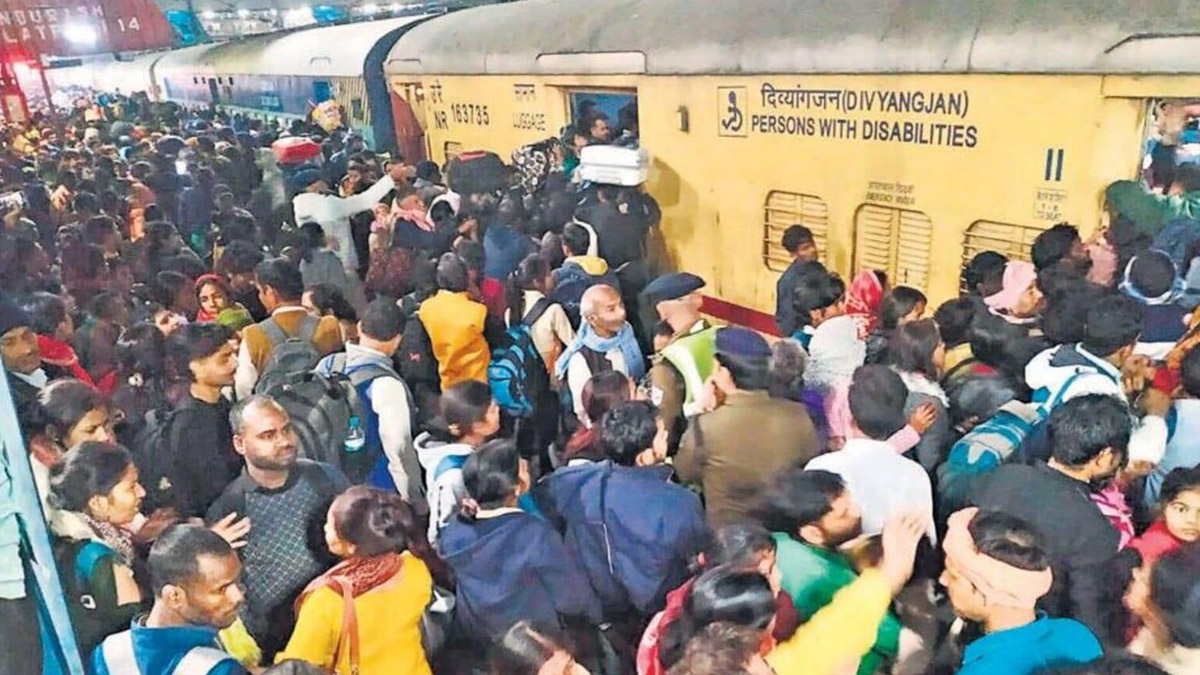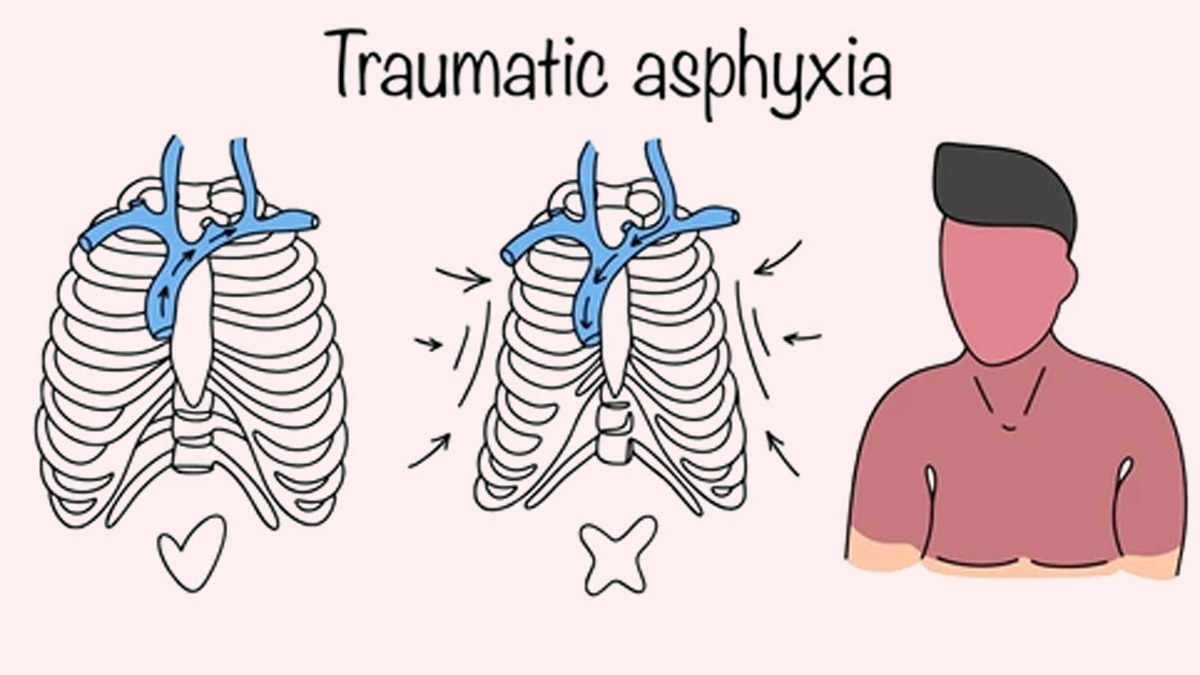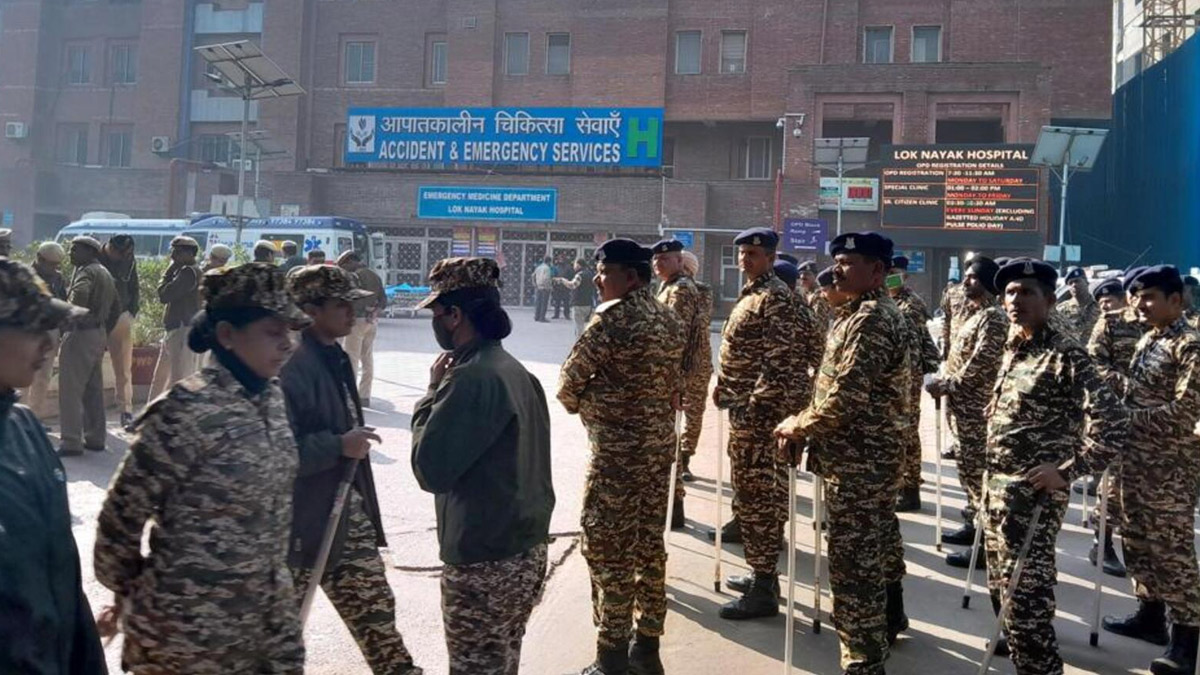
A tragic stampede at the New Delhi Railway Station on Saturday night claimed the lives of at least 18 people, marking one of the most devastating incidents at a transport hub in recent years. According to a senior railway official, the disaster unfolded as passengers slipped while descending from a foot overbridge, leading to a chaotic and fatal pile-up.
Table of Content:-
On Sunday, RML Hospital confirmed that five of the victims succumbed to traumatic asphyxia, a severe and life-threatening condition caused by intense chest compression. This revelation sheds light on the dangers of overcrowding in public spaces and the urgent need for better crowd management strategies.

What Happened at New Delhi Railway Station?
The stampede occurred on platforms 14 and 15, where a large number of passengers had gathered to board trains heading to Prayagraj for the ongoing Maha Kumbh. As the crowd surged forward, some passengers lost their balance and fell, triggering a domino effect that resulted in dozens being trampled.
Despite immediate response efforts, the severity of the crush left little chance for survival for many victims. The RML Hospital’s forensic team conducted post-mortem examinations and concluded that five individuals—four women and one man—had died due to traumatic asphyxia.
Also Read: Measles Outbreak In Texas Hits 48 Cases, Worst In 30 Years
Understanding Traumatic Asphyxia
Traumatic asphyxia, also known as crush asphyxia, occurs when extreme pressure is applied to the chest or upper abdomen, restricting normal breathing. The condition is often seen in stampedes, building collapses, and vehicle accidents, where victims are compressed for prolonged periods.
When the chest experiences intense pressure, the diaphragm is unable to expand, making it impossible for the victim to inhale oxygen. Simultaneously, the compression forces blood back into the upper body, leading to distinctive symptoms such as:

- Petechiae: Purplish-red spots caused by ruptured capillaries, often appearing on the face, neck, and eyes.
- Swelling of the upper body: Increased pressure leads to swelling, particularly in the head and neck region.
- Loss of consciousness: Due to oxygen deprivation, victims may faint within minutes.
- Organ failure: If compression persists, vital organs may cease to function, leading to death.
Can Traumatic Asphyxia Be Treated?
In cases where compression is quickly relieved, victims can recover with prompt medical attention. Treatment typically includes:
Also Read: High Levels Of Faecal Bacteria Detected In Ganga During Maha Kumbh As Lakhs Take Holy Dip
- Oxygen therapy to restore normal breathing.
- Cardiovascular monitoring to assess any potential damage to the heart and blood vessels.
- Fluid management to address shock and prevent further complications.
- Imaging tests to detect any internal injuries or fractures.
However, the survival chances drastically decrease if the pressure is sustained for too long, as vital organs can sustain irreversible damage within minutes.

Preventing Future Tragedies
The New Delhi Railway Station tragedy highlights the dangers of overcrowding and poor crowd control measures in high-traffic areas. Authorities must take immediate steps to prevent such incidents, including:
- Better crowd management: Implementing barriers, designated entry and exit points, and real-time crowd monitoring can help control passenger flow.
- Emergency response planning: Trained personnel should be stationed at critical locations to respond quickly in case of emergencies.
- Improved public awareness: Educating commuters about safety protocols, especially during peak travel times, can help prevent panic-induced stampedes.
Bottomline
As investigations into the incident continue, it is crucial to address the root causes of such disasters to prevent future occurrences. The loss of lives at New Delhi Railway Station serves as a grim reminder of the importance of crowd safety and the need for effective measures to protect passengers in heavily congested areas.
With proper planning, enforcement, and public cooperation, the risk of traumatic asphyxia and other stampede-related fatalities can be significantly reduced, ensuring safer travel for everyone.
Also watch this video
How we keep this article up to date:
We work with experts and keep a close eye on the latest in health and wellness. Whenever there is a new research or helpful information, we update our articles with accurate and useful advice.
Current Version
